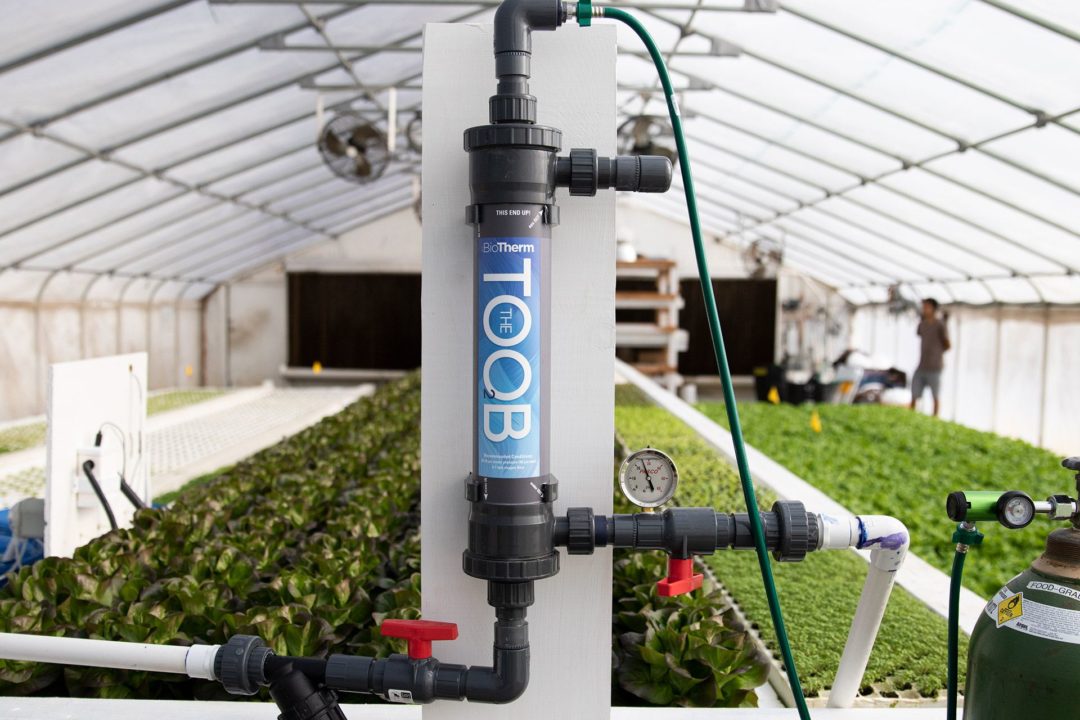Why It’s Important To Stay One Step Ahead Of Thrips

Thrips have grating mouthparts that chafe the surface of leaves and flower petals, releasing sap that they then suck up. The grating causes disfiguring damage to the plant tissue.
Taking the initiative to keep thrips populations below damaging thresholds is always easier said than done. Make no mistake, allowing thrips to get ahead of you is costly in terms of lost crop quality and the added expense of a come-from-behind control program. Shrink is very expensive.
It’s not too late to gain the upper hand on thrips. Fortunately, some spray and drench products are demonstrating good activity. The example of Conserve serves to remind us not to become overly reliant on one insecticide, no matter how many good qualities it has. Resistance-management labeling and good pesticide stewardship dictate that we cannot simply hammer away with pesticides as our silver bullet. Thrips have a well-deserved reputation for developing resistance to pesticides. Practicing a sound rotation strategy is an important part of slowing the progression of pesticide resistance.
First-Choice Products To Control Thrips
The GGSPro team works closely with many growers regarding pest control programs. The resulting feedback provides valuable insight into which products are working well and how best to utilize them. The following products and application strategies are currently among the most successful for thrips control:
• Avid tank-mixed with a neem-based insect growth regulator (IGR), such as Azatin O, AzaGuard or Molt-X, and applied as a foliar application is effective when applied two times, seven days apart. To successfully break the lifecycle, do not wait longer than seven days to make the second application. Avid has a 12-hour re-entry interval (REI) and the neem-based IGRs have a four-hour REI. When tank mixing, the 12-hour REI must be used.
• Kontos drench applications show very good results, though they are slow to take full effect (up to three weeks). They provide up to four weeks or more of control. Foliar spray applications have given variable results and are not recommended for thrips control. Geraniums, cordyline, dracaena palm, fern, hoya, phlox, schefflera, and verbena are among crops damaged by Kontos. Kontos has a zero-hour REI when applied as a drench and label conditions are met.
• Mainspring can be used as a foliar spray or a drench. Foliar sprays stop feeding quickly but may take several days for death to occur. Drench applications may require up to two weeks to take full effect and are unlikely to control thrips in flowers. Mainspring has a four-hour REI and a zero-hour REI as a drench, if label conditions are met.
• Mesurol 75 WP is recommended early in the crop as it may leave a residue and damage certain open blooms. Maximum application is two times at 10 days apart. It has a 24-hour REI.
• Overture 35 WSP is a slower-acting insecticide, taking up to seven days to see significant reductions in adult thrips populations from a foliar application. It has excellent plant and bloom safety. Growers often use this product after faster-acting options have reduced the population. Overture 35 WSP is for greenhouse use only and has a 12-hour REI.
• Pylon & Pylon TR foliar applications are typically made two times, seven days apart, before rotating. Certain fruiting vegetables are on the label. Pylon TR is a total-release aerosol that treats 3,000 square feet.Both formulations are for greenhouse use only and each has a 12-hour REI.

Thrips have a well-deserved reputation for developing resistance to pesticides. Here, thrips-feeding scars on can be seen on gerbera daisy.
Second-Tier Products (Used in Rotation with Primary Control Products)
• BotaniGard can be tank-mixed as a foliar spray with a neem-based IGR, such as Azatin O, AzaGuard, or Molt-X. Apply it three times at three-to-four days apart, including the neem-based IGR in first and third treatments. BotaniGard has a four-hour REI.
• Certain neonicotinoid insecticides, such as Flagship, Safari, and TriStar have shown effectiveness against thrips. This mode of action is already heavily used for a variety of other greenhouse pests, so we generally do not recommend these products for resistance management reasons.
It is always recommended to trial pesticides on small quantities of plants to evaluate for phytotoxicity before making large-scale applications. Products other than those mentioned may also be safe and effective. Always read and follow all label instructions. Please note, some products may not be registered for use in all states.
6 Questions You Must Answer To Reduce Thrips Damage
Before you detect your first scarred bloom, deformed leaf, or virus outbreak, take a step back and draw on your experiences with thrips control. You should be asking yourself these questions:
1. On which crops do thrips show up first every year?
2. Did I segregate incoming plant shipments to evaluate them for insect and disease presence?
3. What do the early stages of thrips look like, and am I scouting weekly?
4. What are my weekly sticky-card counts telling me about the population trends?
5. Do I understand the thrips life cycle well enough to make timely pesticide decisions?
6. Am I using every tool, including cultural and nutritional monitoring, to reduce thrips reproduction?











